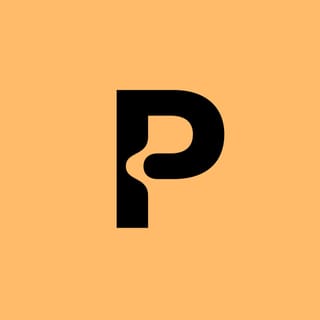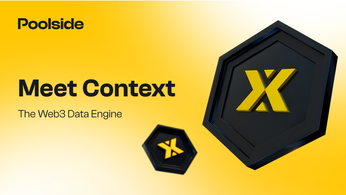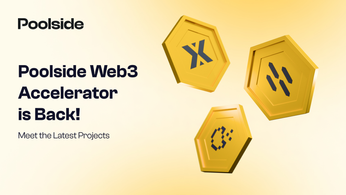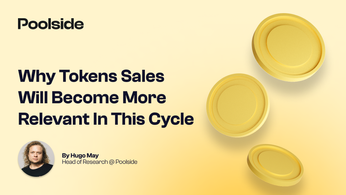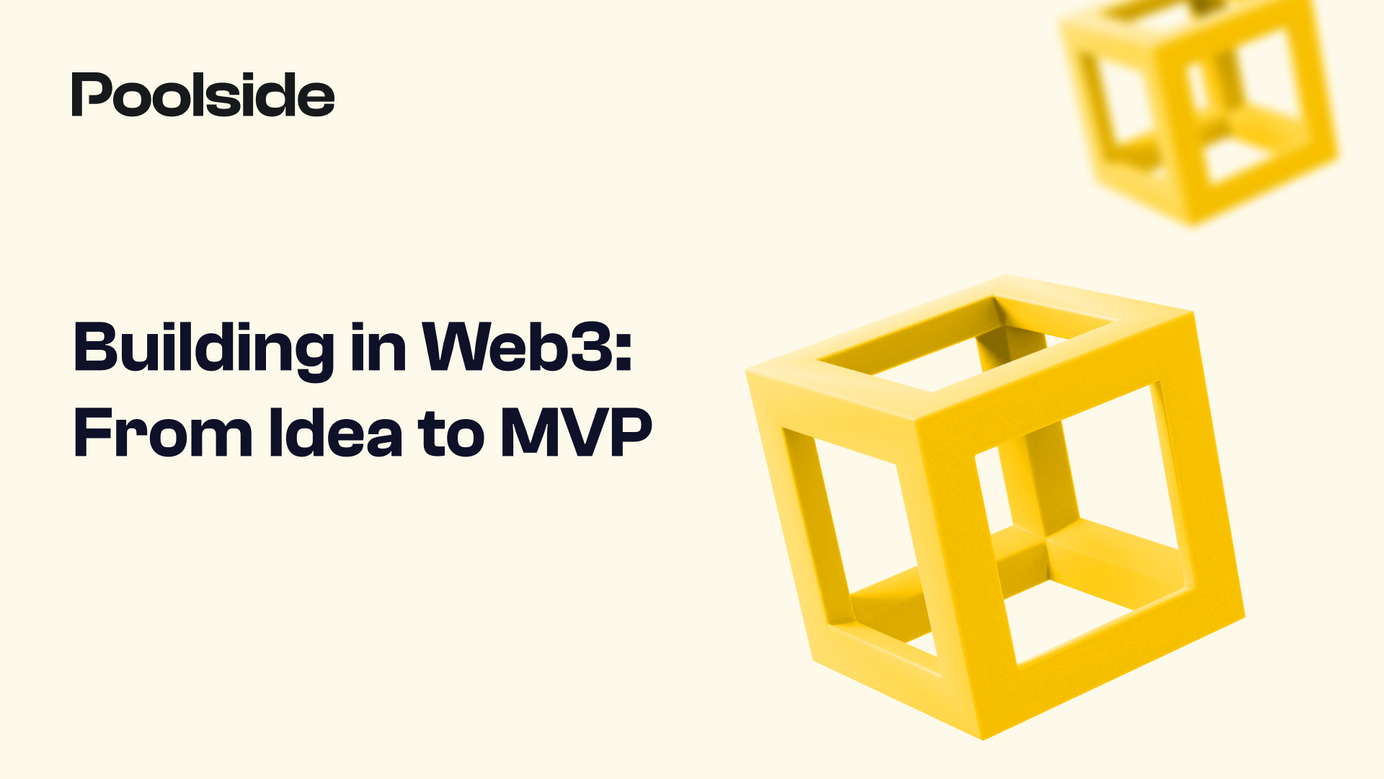
Building in Web3: From Idea to MVP
An introduction to some key elements of building in Web3.

The idea of building a minimum viable (MVP) has been around since 2001. It refers to the process of developing the leanest version of a product/application with minimum functionality. Eric Ries, the author of the bestseller ‘Lean Startup’, describes an MVP as “a version of a new product which allows a team to collect the maximum amount of validated learning about customers with the least effort.”
And just when the MVP concept built a 20-year-long history and proving ground, here comes Web3 technology. The advent of this new breed of technology pushes the MVP notion to take the next step and evolve.
This blog post is the gateway Web3 entrepreneurs and builders were looking for. Expect tips, guides and examples of what going from an idea to a Web3 MVP look like. How is it different from Web2, and what are the things to keep in mind when building the MVP?
Let’s get right to it.
Web3 MVP: How is it different from Web2? — Community.
The main difference between the two is that Web3 MVPs must be vetted, approved and cosigned by the community of future users and ambassadors. Community is an integral part of the Web3 identity, which spills over to the creation of the MVP. Project creators must essentially “market” an unfinished product to their audience. To partake in this testing, beta phase of the project, the end user must have a wallet to interact.
Let’s use the Brave browser as an example. In their 2017 announcement, Brave urged the community to test, review and provide feedback.
Here’s how they highlight the importance of community in their MVP process:
“All of our software is open source. We welcome feedback from developers or testers regarding this beta build. Please make sure to back up your profile before testing. If you would like to report an issue, please visit our GitHub browser-laptop page. We’re grateful for your contributions and look forward to sharing Brave 0.19 with everyone soon!”
Fast forward to 2021, and the results Brave reported are astounding:
Over 24 million monthly active usersOver 7 million daily active users
Close to 12M wallets
4.3M monthly transacting BAT users
1 million verified publishers
More than 400 advertisers
In that same announcement, they showcase the community’s active role in MVP. The statement reads:
“Today, we announce an event where the community has the opportunity to participate in the design and development of the next generation of Brave Ads and Rewards.”
The project’s MVP is rooted in their community’s approval, contributions and participation. On the other hand, there should be a mechanism to allow projects to reward those who joined early, test, and give feedback in the forms of airdrops and token payments. Hence incentive design and tokenomics design are crucial steps to building Web3 MVP. We’ll dive right into it.
4 Steps to build a Web3 MVP
For the most part, a Web3 MVP process follows the same principles, structure, and ideas as Web2. A Web3 MVP must go through these steps:
#1 Planning phase
#2 Build (community, tokenomics, product)
#3 Pre-Launch. Fail fast, fail cheap
#4 Iterate, traction, funding and scaling
Now, let’s move on to the planning phase of the MVP.
#1 Planning Phase
Here are some standard questions you need to answer before attempting to write a single line of code:
- What problem are you trying to solve?
- Is there someone else working on this idea? If yes, what can I learn from them?
- Is blockchain technology and/or a token an added value to my project?
- How many people would be interested in paying and/or participating?
- Can my idea be ELI5?
- How will my users (community) be implicated with the product?
The initial light-bulb moment is exciting but always let ideas sit, simmer, and marinate before committing time and resources. These types of questions help you audit and assess the validity and potential of the idea.
A clear value proposition
Value proposition refers to the reason why someone should choose to buy your product or service. It’s the core of your competitive advantage. This concept has been around for quite some time and has been used by Web2 projects with great success.
How does the idea of value proposition evolve in the Web3 space? For the most part, the formula remains the same:
- Find a problem
- Identify how you can solve it
- Why is your solution better than what’s already out there?
- Is your solution solving a problem many people are facing?
- Communicate the solution in a simple and direct way
Let’s use Brave, once again, as an example. The project takes an idea -the browser- everyone is familiar with and gives it the Web3 treatment. With Brave, you can browse while getting rid of all the things that annoy you in Web2:
- No website trackers and online advertisements
- Your data is kept on your device and is not accessible by a third party
- Migration from a Web2 browser happens in 60 seconds
- They have a crypto wallet built into the browser
- You can choose to watch ads and get rewarded for watching them with coins going directly into your wallet
The problem is apparent, their market is everyone who uses a browser, their solution is all-encompassing, and communication is as simple as it gets. One could argue that Brave is a perfect example of how to migrate a Web2 project into Web3.
#2 Build (community, tokenomics, product)
Find community
In its traditional sense, this step requires projects to test their hypothesis, set out their KPIs to measure progress and define when that progress turns into a success. This is where the Web3 differentiation comes into play. In Web3, users aren't just future customers but a core part of the product. They are the ones who test the product, give feedback, partially own the product, and spread the word regarding its viability. They are users, investors and marketers, all wrapped up in one.
Building a community carries much more weight in Web3 than in Web2 projects. Defining and validating MVP assumptions used to be an internal process with some focus group work. When building an MVP in Web3, there needs to be time, effort and resources in engaging with people in channels like Telegram, Discord, or Twitter.
The success and adoption of your MVP will depend on the strength of your brand value and community. Share your learnings and progress and create a sense of excitement surrounding your idea.
Take projects like Aave and Compound, for example. Following the recent Avraham Eisenberg scandal, both projects found themselves on the cusp of important decisions regarding their future.
Enter community.
In the case of Compound, they passed a proposal to impose loan limits and introduce new borrowing caps to lower risk on its platform. The community voted overwhelmingly in favour of introducing or lowering the maximum borrowing amount for ten cryptocurrencies, including wBTC, LINK and UNI. The community has actual decision-making power and is contributing to the evolution of the business model.
When it comes to Aave, the community approved a proposal to see the protocol’s low liquidity asset pools decommissioned, such as CRV and MANA.
Take the impact of community decision-making from these examples and apply them to the MVP stage and what you have is a mechanism that allows you to define assumptions in the best way possible. Here’s how to kick-start the process of building a strong community:
- Give your community the right to make decisions
- Be honest and transparent about your progress and plans
- Incentivize ownership Release exclusive content
- Hold events, competitions and giveaways
You want to help investors and community members see that the primary mechanism behind the idea works. Think of your MVP as the pilot of a Netflix series. The pilot initiates excitement, introduces the main characters and foreshadows the plot. Your MVP should serve the same purpose.
Tokenomics Design
Then comes the topic of tokenomics. The amalgamation of the words token and economics, tokenomics is an idea that is unique to Web3 projects. It refers to the parameters of a token’s utility and value within a project’s environment. These parameters range from a project’s founding team to the roadmap and community growth.
Here are some questions to consider when planning for your project’s tokenomics:
- Does your project really need a token?
- Does the token grant users access to voting or building rights? Do users need the token to interact or communicate with one another? Is the token a key to unlocking advantages, benefits or exclusive content?
The list could be much longer, but you get the idea - building an idea in Web3 comes with an added layer to consider. A token’s role and relationship with blockchain technology make tokenomics an unavoidable step in setting a clear value proposition. Let’s look at an example.
The Uniswap protocol has a native governance token named UNI. The team minted a total of 1 billion UNI tokens at genesis – a portion of which will slowly be unlocked over the course of 4 years.
The UNI token is designed to be the foundation of the Uniswap protocol governance going forward. UNI holders who hold 1% or more of the total UNI supply can do things such as submit development proposals, while a below 1% holder UNI holder will be able to vote on these proposals. UNI holders can also help fund grants, partnerships, and liquidity mining pools.
The end goal is for the core Uniswap team to slowly transfer the decision-making process to UNI holders, creating a self-sustaining and completely decentralized protocol. The importance of UNI is not limited to governance, though.
What’s important to note is that once 1 billion UNI tokens are distributed, the token will become inflationary at a fixed percentage of 2%. What that means is that inflation will be rewarding liquidity providers. Put simply, UNI holders who contribute liquidity to the protocol will earn a part of the newly minted UNI. The UNI token is a core incentivizing factor for users to provide liquidity to the protocol.
A good tokenomics system is designed to build a community and attract people who want to contribute to the evolution and progress of both the token and the project. You want people to see more value in keeping the token rather than selling it. Uniswap uses its token to give people voting rights and participates in the protocol’s governance forum.
#3 Pre-launch to validate assumptions - fail fast, fail cheap
Validating assumptions does not mean building a feature and then testing if it works. Assumptions can be validated through other means and methods the moment you step outside your team’s brainstorming sessions.
- Talk to industry experts and prospective users
- Run workshops, demo days, surveys, assessments, and reviews
- Try getting as much input as possible from your community and network
Diem
Diem was a project that died in its tracks despite being backed by some industry heavyweights, such as venture capital heavyweight Andreessen Horowitz. Facebook's announcement to design a cryptocurrency and payment system back in 2019 raised concerns from the get-go.
Funnily enough, Mark Zuckerberg's motto was “Move fast and break things”, and Diem literally lived up to it. The project faced regulatory blockades that did not allow it to deliver on its promise. Here is more on how the project failed to validate initial assumptions:
"As we undertook this effort, we actively sought feedback from governments and regulators around the world," CEO Stuart Levey said in a statement. "Despite giving us positive substantive feedback on the design of the network, it nevertheless became clear from our dialogue with [US] federal regulators that the project could not move ahead."
#4 Iterate, traction, funding and scaling
Even when you have your MVP up and running, there are several hoops you need to jump through to ensure you make it in the open market. How do you do all that? You find help.
Enter Poolside Accelerator.
Poolside Accelerator is a 12-week Acceleration Program empowering founders to build, launch and scale in the Web3 space. Having your fingers in many pies can distract you from focusing on the basic building blocks. Getting the right kind of help can propel your project in unimaginable ways. Here’s what you can expect from Poolside Accelerator:
- Up to $100,000 in initial funding
- Daily check-ins, in-depth discussions, funding support
- Demo day with mentors and investors 1:1 meetings with potential stakeholders
- Weekly events with the fellow companies
- and more
Applications are open for cohort 2: Q2, 2023. Apply here.
About Poolside
Poolside Web3 accelerator is a 12-week remote combined with a 1-week in-residence (Lisbon) program designed to take the project from inception to execution to market. Selected projects will access initial funding and mentorship in marketing, token economics, legal, funding, business, blockchain, listing, and others.
Poolside Newsletter
Join the newsletter to receive the latest updates in your inbox.

